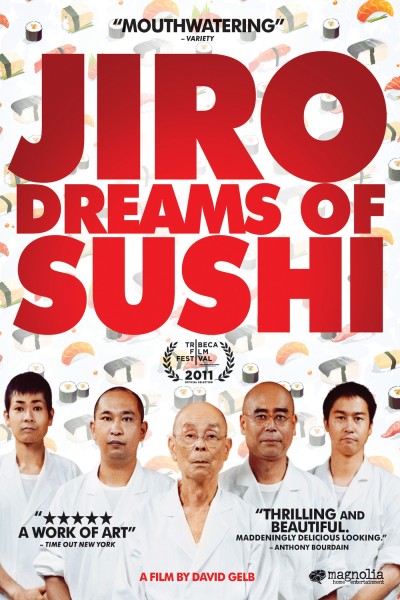 I recently watched the documentary “Jiro Dreams of Sushi.” It’s a great film (available on Netflix). Beautifully shot, well-constructed, nicely edited. I highly recommend it for anyone who loves sushi, Japanese culture, and/or people who take craft seriously. It’s the story of an elderly man –Jiro– who runs what the film presents as THE preeminent sushi restaurant in Tokyo. The documentary examins his methods, philosophies, and work ethic.
I recently watched the documentary “Jiro Dreams of Sushi.” It’s a great film (available on Netflix). Beautifully shot, well-constructed, nicely edited. I highly recommend it for anyone who loves sushi, Japanese culture, and/or people who take craft seriously. It’s the story of an elderly man –Jiro– who runs what the film presents as THE preeminent sushi restaurant in Tokyo. The documentary examins his methods, philosophies, and work ethic.
Here are some takeaways regarding craft:
Make Craft Intentional
Jiro’s goal, from the very beginning, is not to be the best sushi chef in Tokyo, but to make each dish he served better than the last. To make it better. He constantly fine tunes his practices, strategies, buying decisions, preparations, and menu. He thinks about new sushi recipes all the time. So much so that ideas for better sushi appear in his dreams.
The correlation is simple. Never arrive. Choose to learn with the avarice of an amateur. Never assume you are a pretty good writer, or even the best writer in your circle. Strive for unattainable perfection in the enth degree. Edit, reedit. Reinvision. Rewrite. Reinvent.
I don’t think this means you need to wait for your writing to be Nobel Prize worthy before you publish anything. Just that your desire to be better knows no bounds. Make your writing craft the subject and beneficiary of innumerable experiments and improvements. Never finish with that.
Develop Your Palette
There’s a sequence in the documentary where Jiro expounds on the importance of smell and taste to a chef. He explains that in order to create amazing sushi, you must eat amazing food, to develop your palette to appreciate nuances in flavor, to pay attention to the way things taste. You can only do this by eating good food. He says, “If your customer’s palette is more advanced than your own, how will you ever impress them when they walk into your restaurant?”
Watch what you read. Seriously. Dig deep to find the gems that sting your heart and woo your soul. The ones with immaculate description, dialogue, and dénouements. Quit reading crap. Stretch yourself a little. Read stuff that’s challenging. The classics are a good place to start. Not because they’re old. Because they’ve survived. Hundreds of generations of human beings have given the nod for these things to be passed on to their kids. You can’t shrug that off as irrelevant.
You should also expand your horizons a bit. You know, look outside your genre ghetto. You might be surprised by what’s out there. Some of it’s pretty good. That’s the point. Stick to the good stuff.
Take the Time it Takes
Jiro was pretty old when they made the documentary. 85, I believe? His son, who’s in his sixties, is still waiting in the wings to take over the family restaurant. Still waiting. Learning. Absorbing the last ounces of knowledge the master has to offer. This stuff takes time.
It takes 10 years minimum for an apprentice to work his way from the back of the house ringing out towels to preparing sushi for customers. Millions of failed sushis go in the trash before the novice’s work is deemed good enough for Jiro’s name and reputation to ride on it.
That’s how you get better. When people shout you down. When you get another rejection letter. When no one shares your articles. While you could waste these opportunities blaming the audience who doesn’t understand your genius, your time will be better spent in reflection. It’s a chance for you to reexamine your work, find what you’re doing poorly, and improve.
It takes dedication to improve your craft. It takes a teachable attitude. It takes patience. It takes time.


